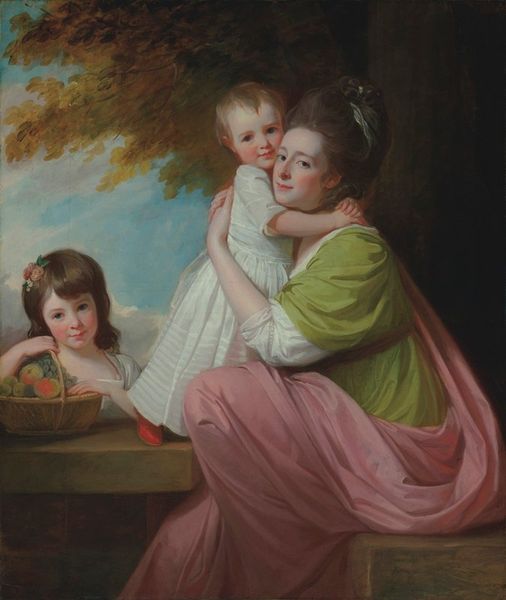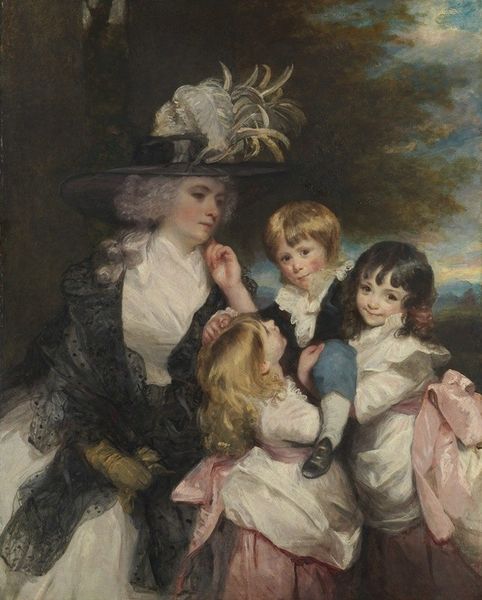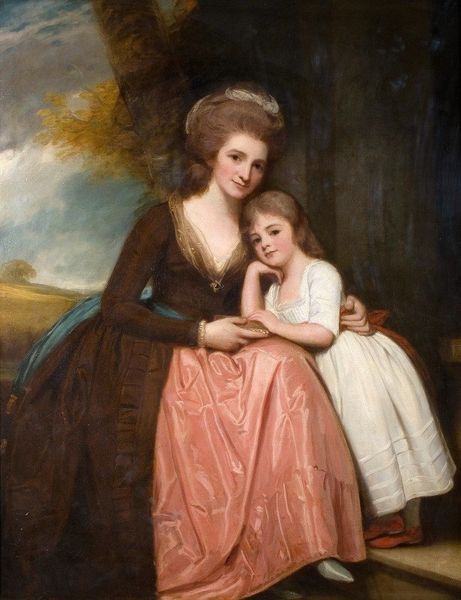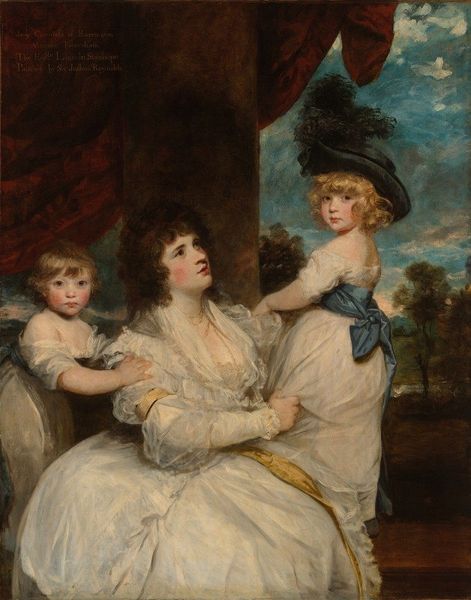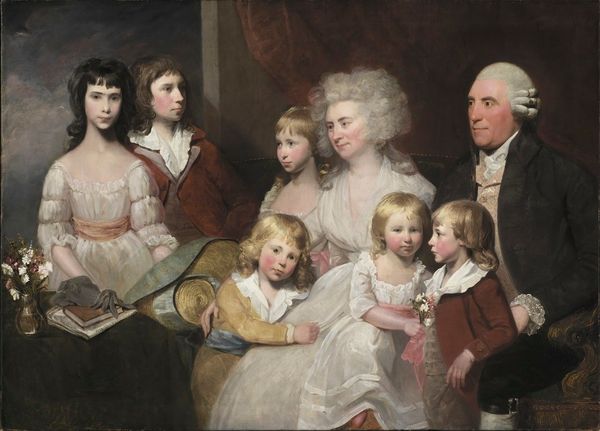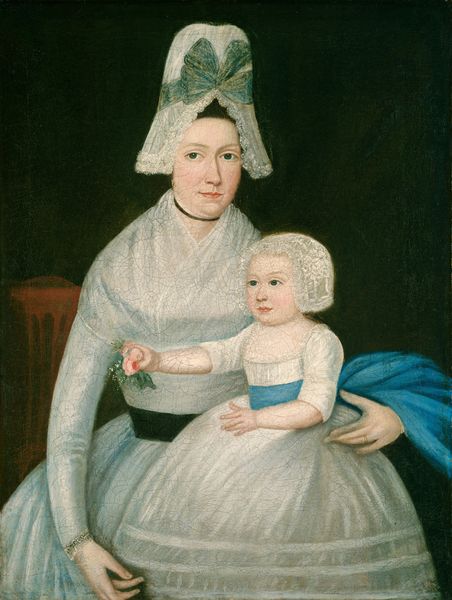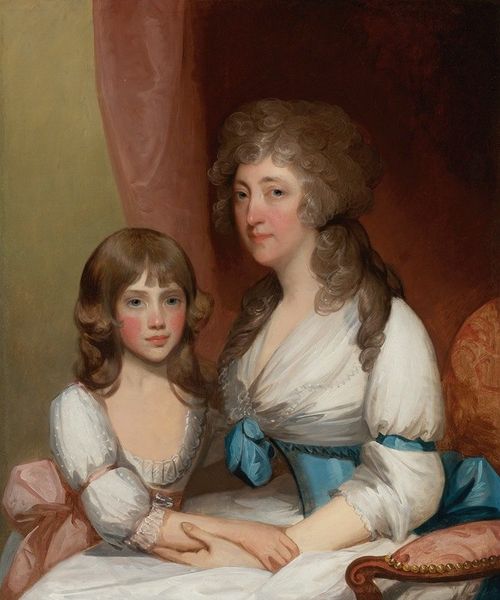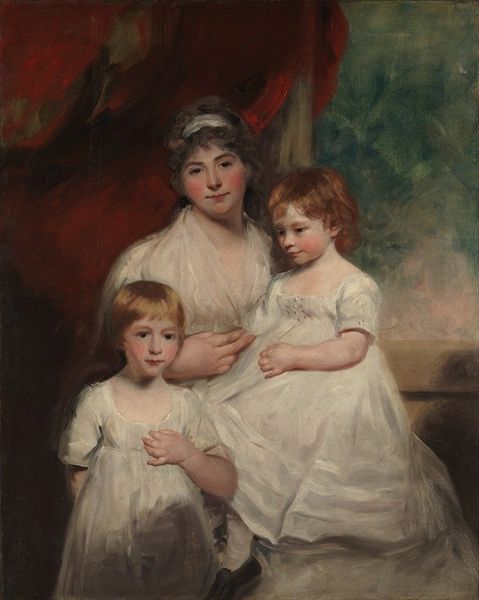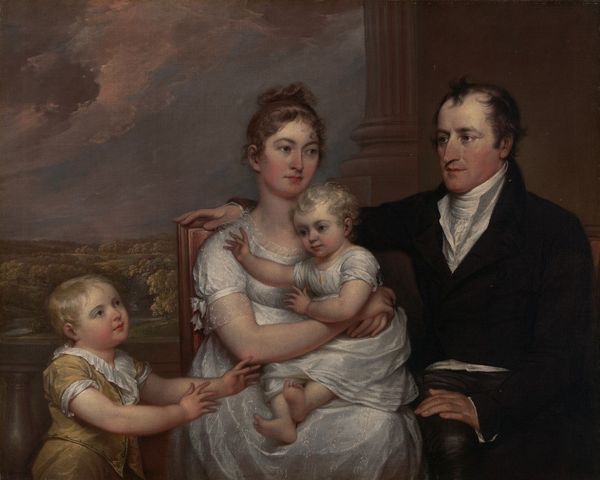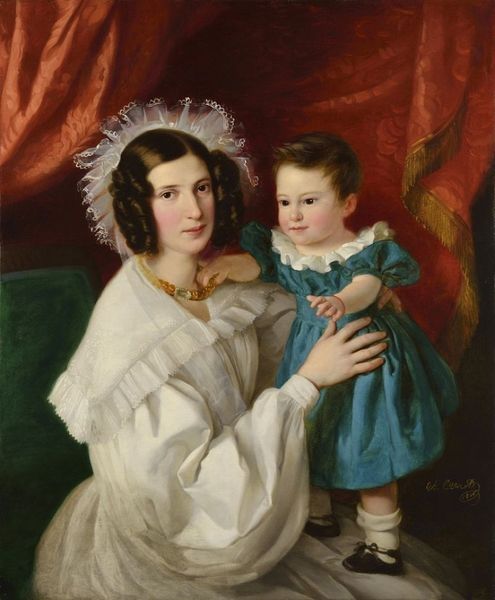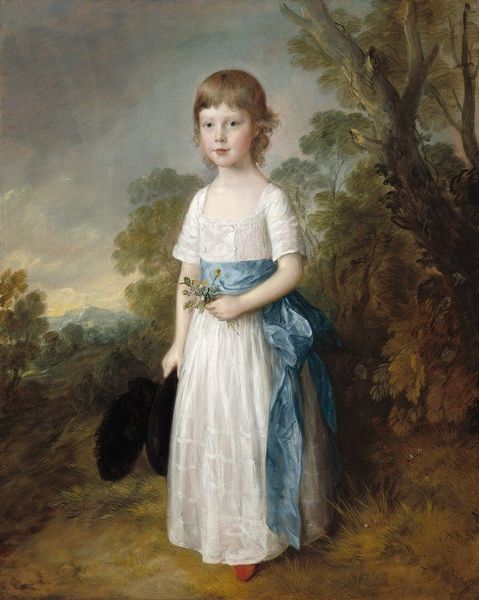
Copyright: Public Domain: Artvee
Curator: Here we have Gilbert Stuart’s "Portrait of a Family," painted in oil sometime between 1783 and 1793. Editor: It feels rather formal, doesn’t it? A bit…staged. The composition is carefully constructed, a visual assertion of order and familial harmony. Yet there’s an undercurrent of melancholy in the subjects' eyes. Curator: The clothing! The mother's towering, powdered wig. The children's fine garments. Stuart masterfully depicts their status. The textures speak volumes—the sheen of silk, the soft cotton of the children’s attire. Notice also how Stuart emphasizes specific objects. The child has these interesting small scissors attached by chain on the right, a strange thing to include, or so one may think. Editor: Yes, objects gain importance, the children frozen at certain ages—objects can represent a person as well as a class. Considering this piece's historical moment, its adherence to formal portraiture suggests a reinforcement of social hierarchies, as family wealth would continue through future generations, their "likenesses" displayed for admiration. Look at how they hold themselves. Do they look relaxed or comfortable? It’s as if all identity has been replaced by their status in this picture. Curator: There is more to their gestures than you'd see at first look, their symbolism being central to unlocking meaning here. A symbolic key or tool, if you will. For example, the gesture made by the smaller girl on the lap of the mother as it rests her palm against the stomach, this signals hope for a potential birth on the horizon. While their status in society is certainly highlighted, family hope may be the actual key message within the artwork. Editor: While the hand on the stomach could very well hold a symbol for the possible birth of another sibling on the way, to ignore class distinctions, as highlighted so meticulously within the formal portrait structure, would simply be ignoring the social and political setting in which the painting takes place. There is something inherently gendered in the image as well; a promotion of family as woman’s key domain in culture that promotes ideals of white patriarchal dominance through offspring. Curator: A portrait meant to project both status and hope for legacy—certainly ripe for varied interpretation even now. Editor: Indeed. Its impact resides in its power to spark dialogues on history, power, and family identity, prompting considerations on how representation shapes social values across time.
Comments
No comments
Be the first to comment and join the conversation on the ultimate creative platform.
